Christies has delighted watch collectors with a wonderful catalogue right in time for Christmas. My advice to collectors: Head to NY, do some Christmas shopping and look at the watches for sale. There are some beautiful examples. The NY Christies auction is Dec 7th – this coming Thursday. Let me share a few highlights that stood out for me.
Lot 28 1962 Rolex 6034 with tropical dial
Collectors who follow me will know that I love all Predaytona’s especially 6238, 6234 and 6034.
It is no surprise therefore that I take a liking to this watch, a 6034. I already wrote about a 6034 as my PAK watch earlier this year, here. What I find unusual about this watch is the following: It is a 1962 Rolex and therefore I would expect it to be reference 6234 rather than a 6034. Remember that only one year later the legendary Daytona would be introduced and in 1962 Rolex was already making the 6234 and 6238 already. However, I have studied enough 6034 and 6234 now to admit – that these references are utterly confusing, there is no coherence also with respect to the dials that can be found with case numbers. Also the 6234 and 6034 were most probably made in overlapping years. Therefore a lot more work is required in order for me to become more confident with both these references (6034, 6234).
Let us take a closer look at the dial which is most unusual.
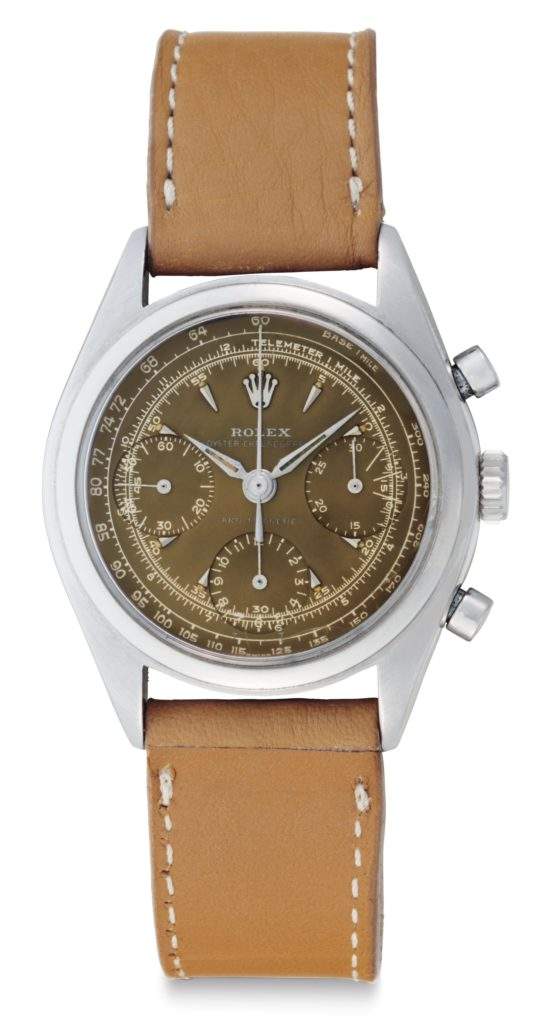
The dial itself is beautiful with both tachymeter and telemeter scales on it (something that is common in the 6234 and 6034). Furthermore, what is interesting about this dial is that it has turned with tropical or brown (the dial was once black) and thus belongs to a rare batch of black dials 6034. The Rolex writing has turned silver white and A-magnetic signature has turned silver. Here is the icing on the cake though: While the dial is signed Swiss only which is correct for the reference (6034) – there are two littles Ts on the bottom of the Swiss dial. The two t´s are above the Nrs 110 and 125 at the tachymeter scale.
Allow me to show a better picture so you can see the floating T’s. (Picture credit: Frank Smits).

Not only have I never seen this before but we can speculate what the T’s mean. One theory is that it was a warning for Rolex to signal a change in radioactivity used in their lume on the dial. Here the year 1962 would make sense as 1962/63 would prove to be transition years for Rolex as they migrated from radium to tritium.
However usually Rolex would signal this transition in the 6034 and 6234 via an underline on the dial like seen here. It is the first time I have seen this little floating T’s. What is clear is that with the next reference 6234 Rolex would sign their dials T Swiss T on the bottom a clear indication of use of tritium. See example below.
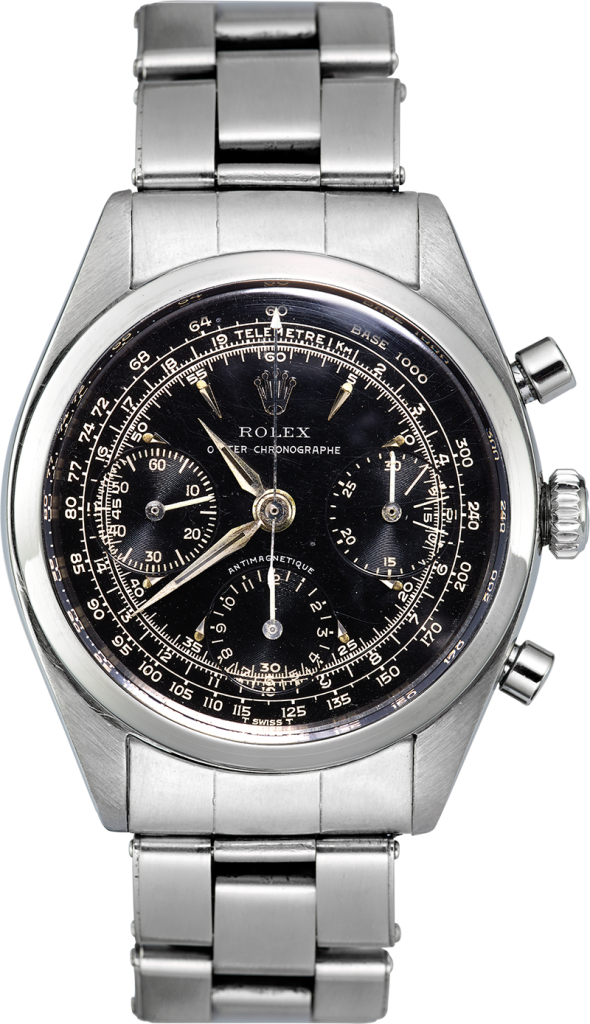
(Credit: Christies).
(Another way Rolex would signal a chance in dial lume material was via an underline on the dial. See picture below. Underline is right below Antimagnetic).
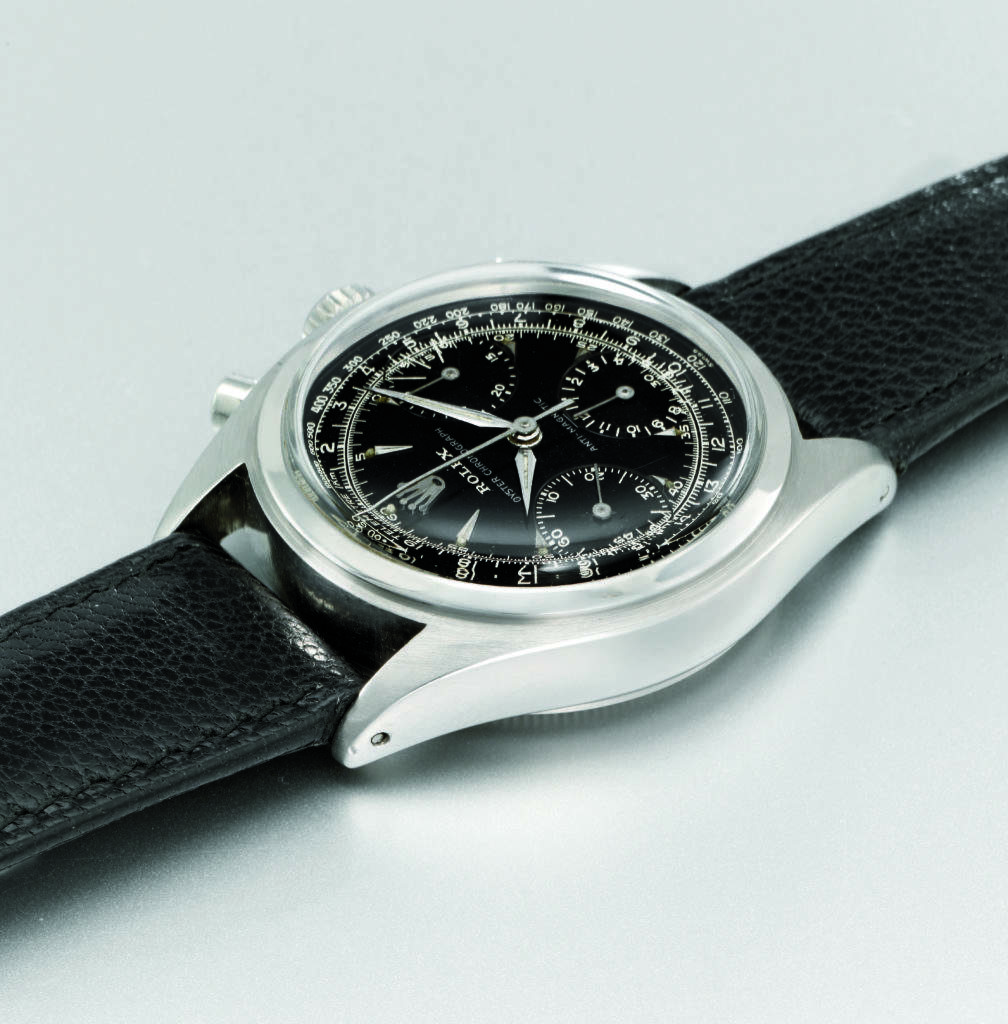
I saw the watch in Geneva briefly but did not study it in detail, here is what I would advise collectors to do: I would also study the sub-dials very careful and how they interact with the outer scale. Sometimes dials can be damaged near that area and it is highly advisable to study this dial with a loupe. Condition report states that the chronograph is not working and watch needs to be serviced. Numbers between lugs visible and clear.
From what I have heard from Christies, the collecting community is fascinated by this watch. I can indeed confirm this.
A few big collectors went to check out the watch for me and it got great feedback. The dial was strong and clean of any imperfections and had turned an incredible caramel brown. The case is strong and has seen minimal polishing in the past. Here are some live pictures of the watch. Notice the caramel like color of the dial consistent throughout the dial except towards the very outer edge. Notice the difference in color between the Rolex signature and Oyster Chronograph signature below. Simply beautiful.
(Picture credit: Oldbackmachines).

Another picture below showing this wonderful rare 6034 Rolex. (Credit: Oldbackmachines).
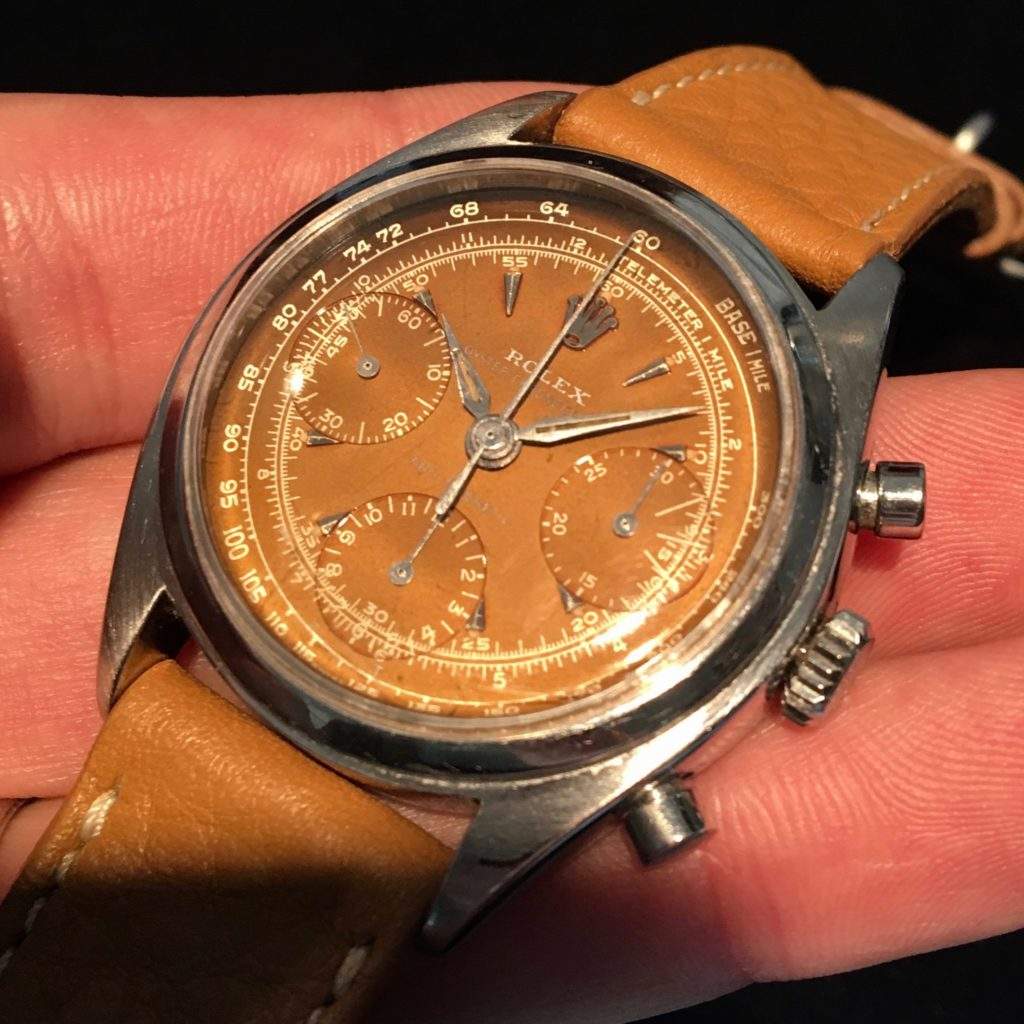
Priced at a strong $150 – 250k – it will be interesting to see where this watch ends up selling. There are rumours that there is an absentee bid in excess of $300k for this watch already.
For more info see watch details here.
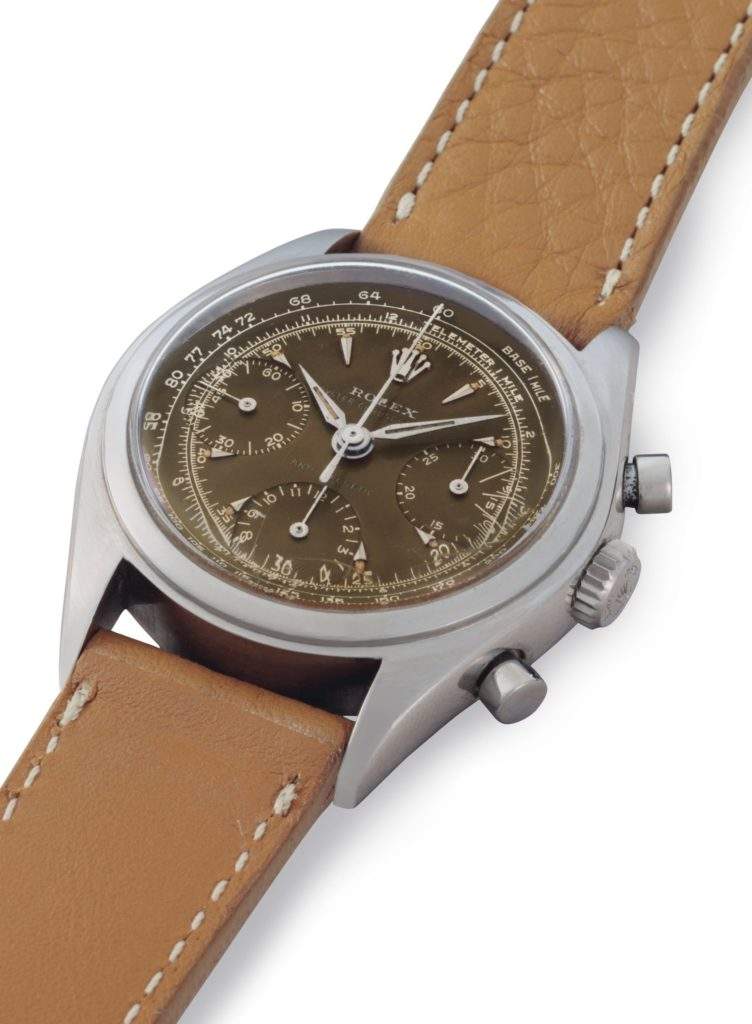
Lot 42 a 1962 Patek Phillipe 3428
A Patek Philippe from the 1960s in white gold can be considered the epitome of understatement and elegance. Especially when we are talking about the 3428.
If you recall earlier this year a 3428 was my first PAK series watch. That was in platinum and came with the original certificate. This watch at Christies is in white gold, there are only thought to be six pieces known, in fact I think there are even less floating around.
While a rare reference, the 3428 Patek does appear on the market now and then. In fact this very watch last sold at Antiquorum in 2015 in HK for roughly $125’000.
How should collectors think of the 3428? Well it is similar to the legendary 2526 from Patek, the first automatic wristwatch by Patek with enamel dial and gold rotor carrying the 12-600 movement. Think of the 3428 as an upgraded version of the 2526 (which it indeed replaced). From the outside the 3428 hardly differs from the 2526. The typical Calatrava case only growing by 1mm. As with the 2526 the centrepiece of attraction is the wonderful enamel dial. Last but not least the beautiful inverted ´qp´ crown that partially integrates into the case as with the 2526 in my view is one of the most beautiful winding crowns ever made.
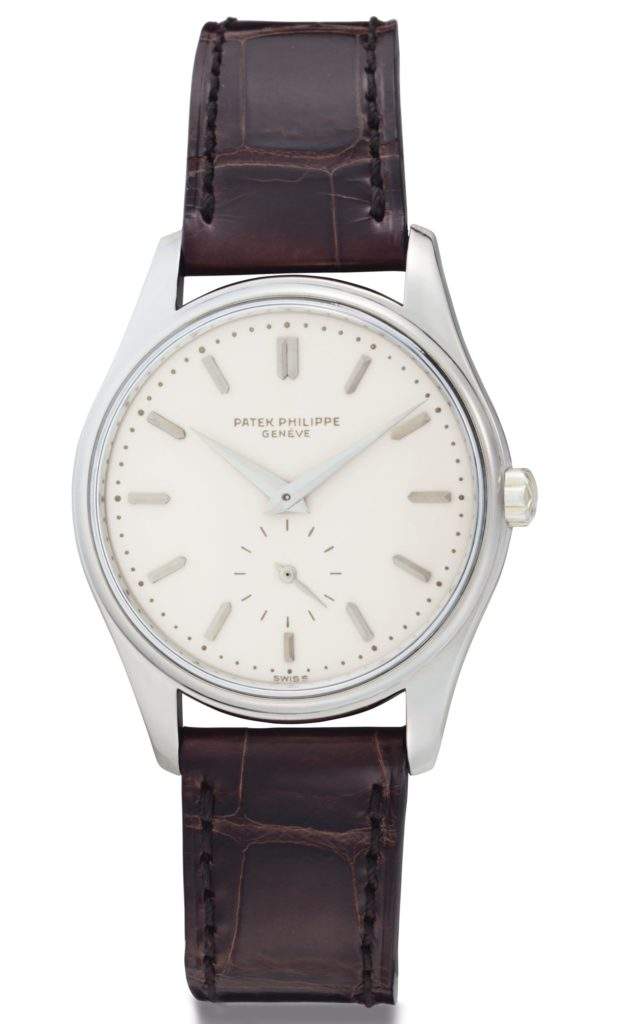
The 3428 however differs on the inside and carries the upgraded calibre 27-460.
Cased in white gold and carrying the Enamel dial, this 3428 differs from any 2526 in another major way: Rarity. You simply cannot find any 3428 on the market. This explains the high estimate of $170-250’000. For a sophisticated collector of elegant watches, this 3428 Patek is a dream come true. Rare, beautiful, elegant and important – this Patek will be closely watched by the world’s leading Patek collectors and rightfully so.
In terms of condition: The dial seem free of any cracks and the case I heard is ‘sub par‘ with most of the hallmarks missing on the case back according to one collector who has seen the watch.
In 2014 a similar watch also in white gold fetched $203’000 for the Christies 175th Patek anniversary sale. Lets see where this one goes.
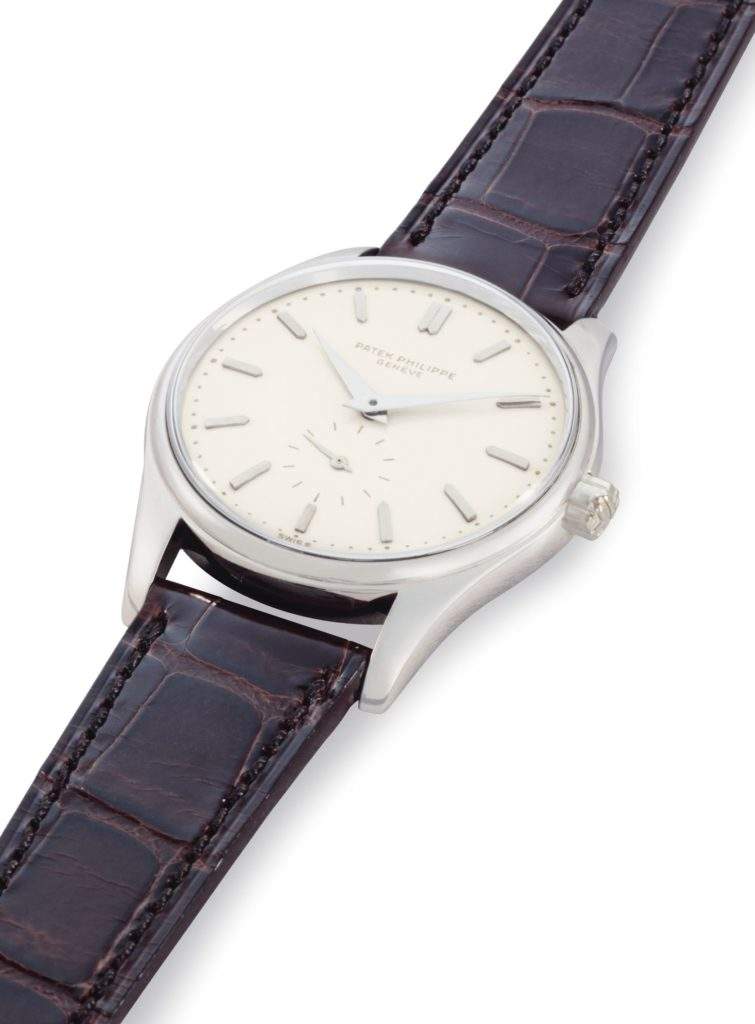
Lot 73 A 1957 Rolex 6538 Big crown
Let me say this straight up: I am more of a small crown lover than big crown. But when a 4L original big crown with Patina comes up for sale – I would be foolish not to write about it.
I think Rolex sportswatches (GMTs, Submariner and Explorers) remain good value relatively speaking in the vintage watch world. Even when it comes to trophy watches like the big crown Rolex. This big crown has several attributes that make it attractive in my opinion. 1) The 4L script with the additional 2L OCC writing. 2) the nice color of the lume with lighter 6 o´clock lume which is typical of many early 1950s sub Rolex (usually the lighter lume at 6 oclock is seen more with the big crown ref 5510). 3) The large lollipop seconds hand 4) The icing on the cake and true differentiator is the rarely seen no hashmark bezel insert – much rarer than the hashmark bezel found on most 6538.
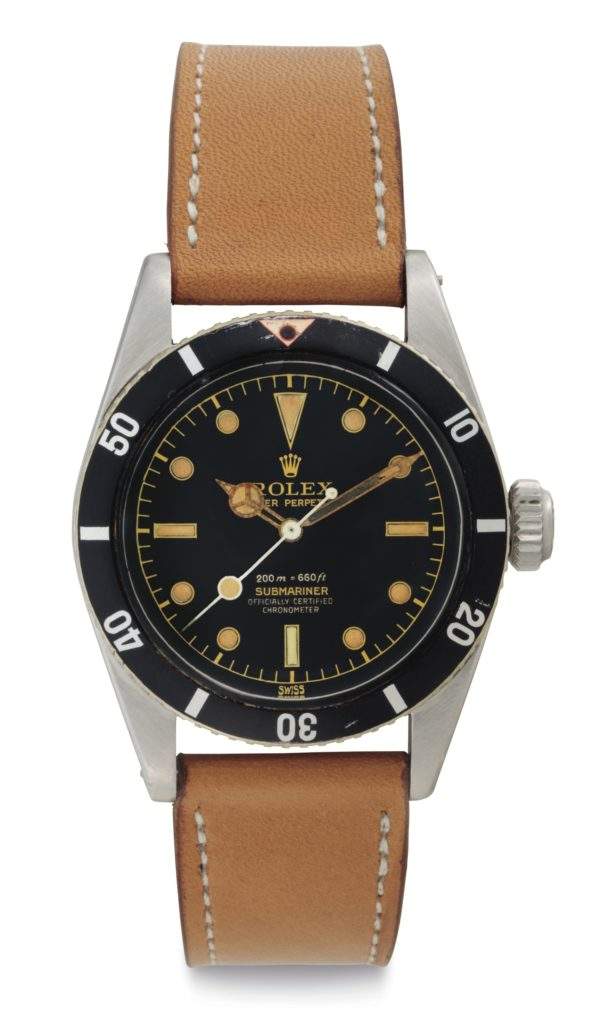
In terms of the condition of the watch: Some experts went to check out the watch in person in NY and came back with the following thoughts: Dial very original and strong. Very nice Patina throughout. Original hands, both hour and minute and seconds hand. Very rare and original non hashmarks bezel insert. The luminous original and geigered correctly and shun nicely under UV light. In short oder this is a very original and attractive big crown! The only negatives I heard were: The case is not as strong as the watch (dial) and that there appears a tiny smudge on the dial between 5-6.
Here are additional pictures courtesy of Nicolas Biebuyck. Glossy dial visible below.
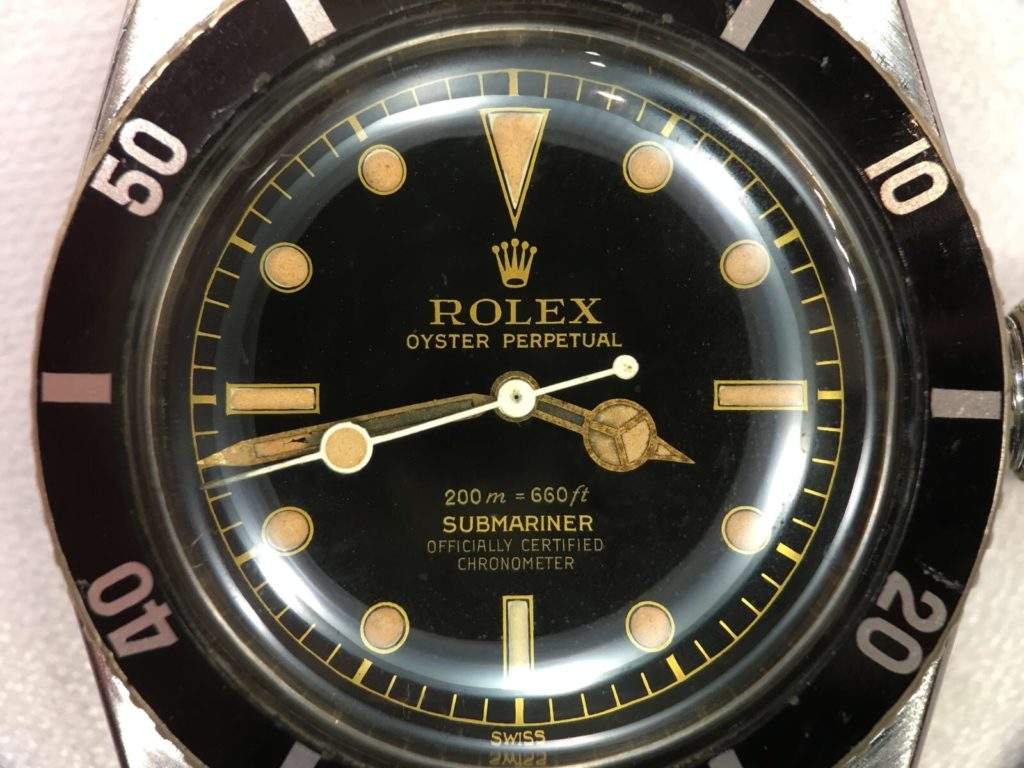
Here a closer look at the signature and crown. Notice the green in the hour and minute hand lume, something very typical of early Rolex sportswatches.
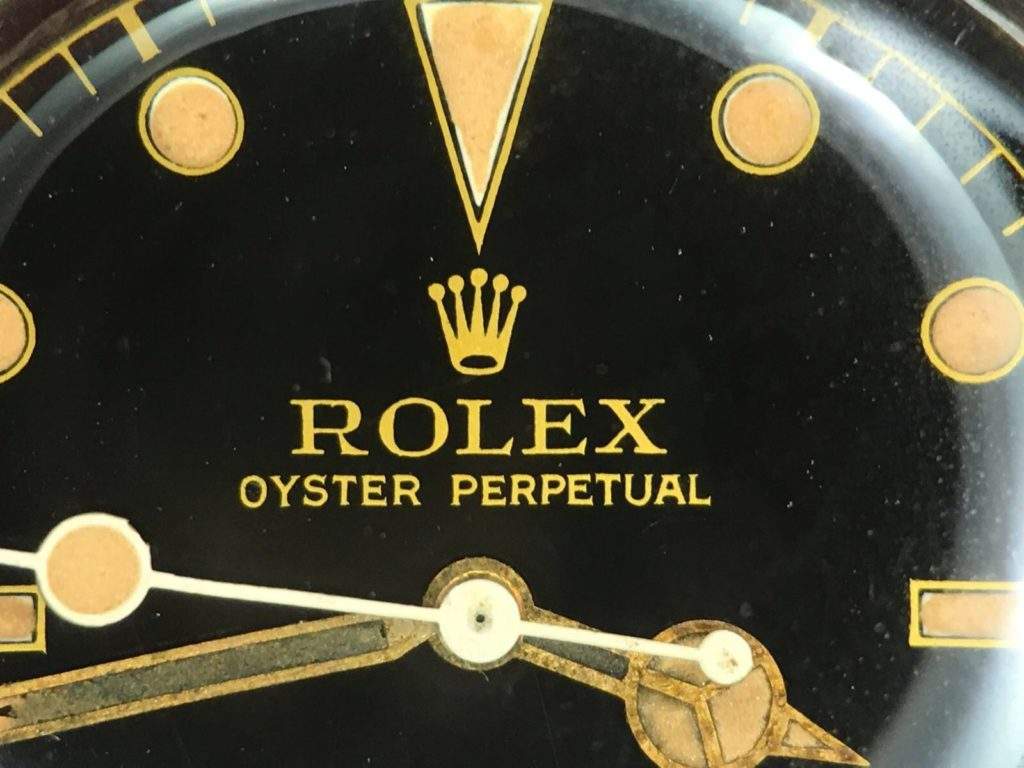
Nice four line text visible below.

A nice detailed picture showing the different text color of the second and third line. (Credit: Nicolas Biebuyck).

Let us see how the lume looks under UV light. Here you go.

Sharp angles to the case edges. However the case is the weakest part of the watch according to experts who have seen the watch.
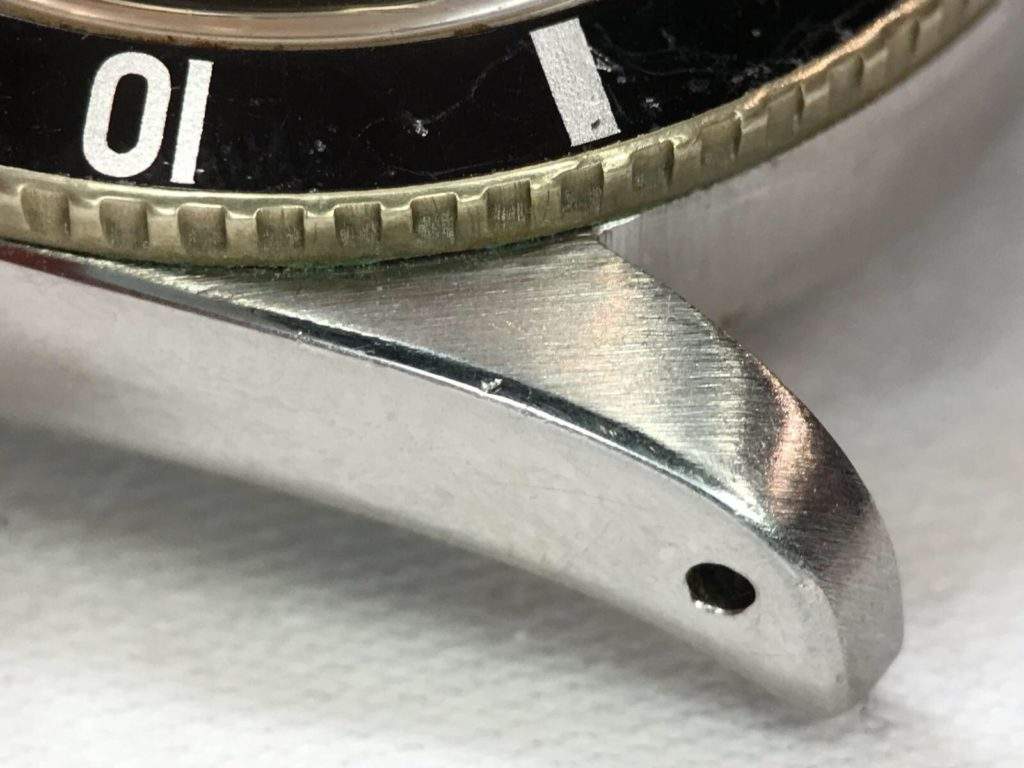
Last picture of the dial shows some pitting on the dial which is absolutely correct and normal for a 1950s radium gilt dial. A good sign of originality.

(My sincere thanks to Nicolas B for the great pictures of the big crown above).
The estimate of this big crown is $100-200k, very conservative and I expect the watch to blow past these estimates very easily.
The Patek 130 is one of my favourite references.
There are many reasons why I like it. 1) it is small at 33mm 2) it has square pushers which I find very attractive 3) They were made in the 1930s and 1940s which means they often carry the long signature of Patek, another big benefit in my opinion.
This particular 130 of Christies was made in the 1930s and carries the attractive Long signature of Patek. The highlight of this watch however must be the four tone sector dial that this watch carries. Sector dials are very collectable today and collectors pay a premium for them especially with Patek. If you look closely at the dial below it carries a four tone dial, meaning there are four different shades of color on the dial which is pretty rare (two tone dials are far more common).
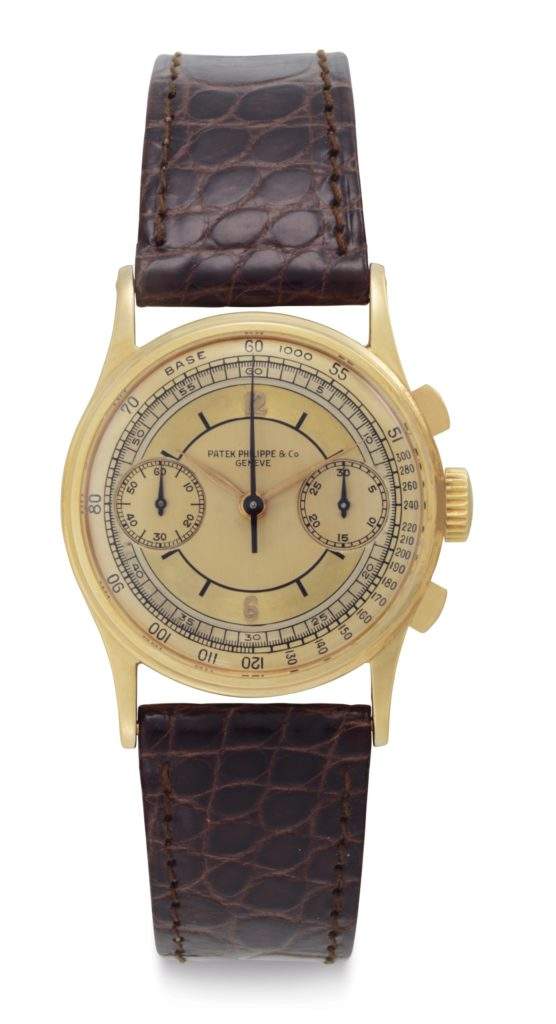
In full disclose, Christies does clearly state in the condition report that the dial has been ‘refinished’ in the past (which could mean cleaned, enhanced etc). The case is quite well preserved with the hallmark to the case nicely visible.
Even if the dial of the watch has been ‘refinished’, the watch can offer the collector very good value if he buys towards the low end of the estimate (or below the low estimate). The 130 is undervalued to begin with and a buyer who appreciates a nice vintage 1930s chronograph by Patek could be well served by looking at this watch more closely.

